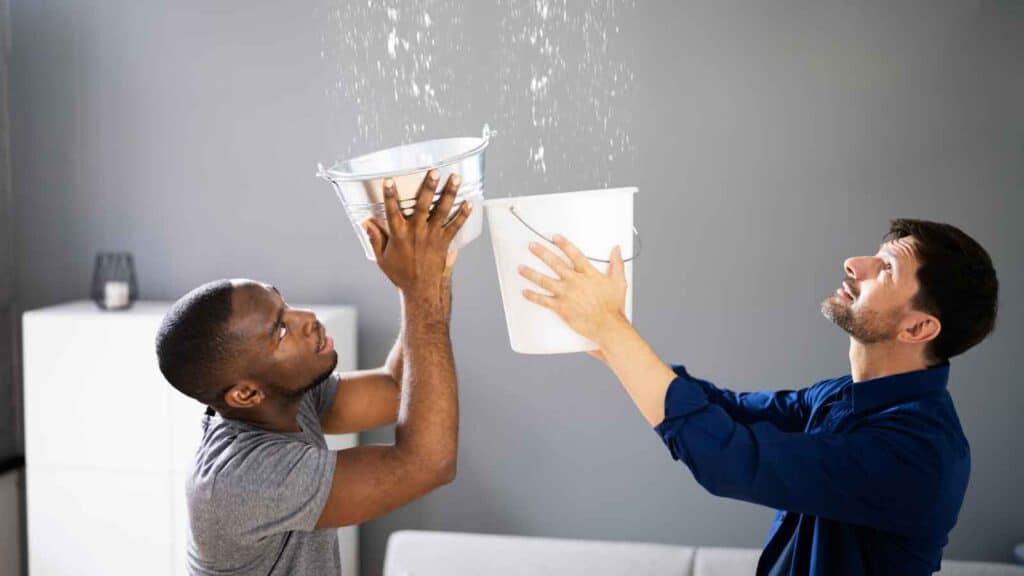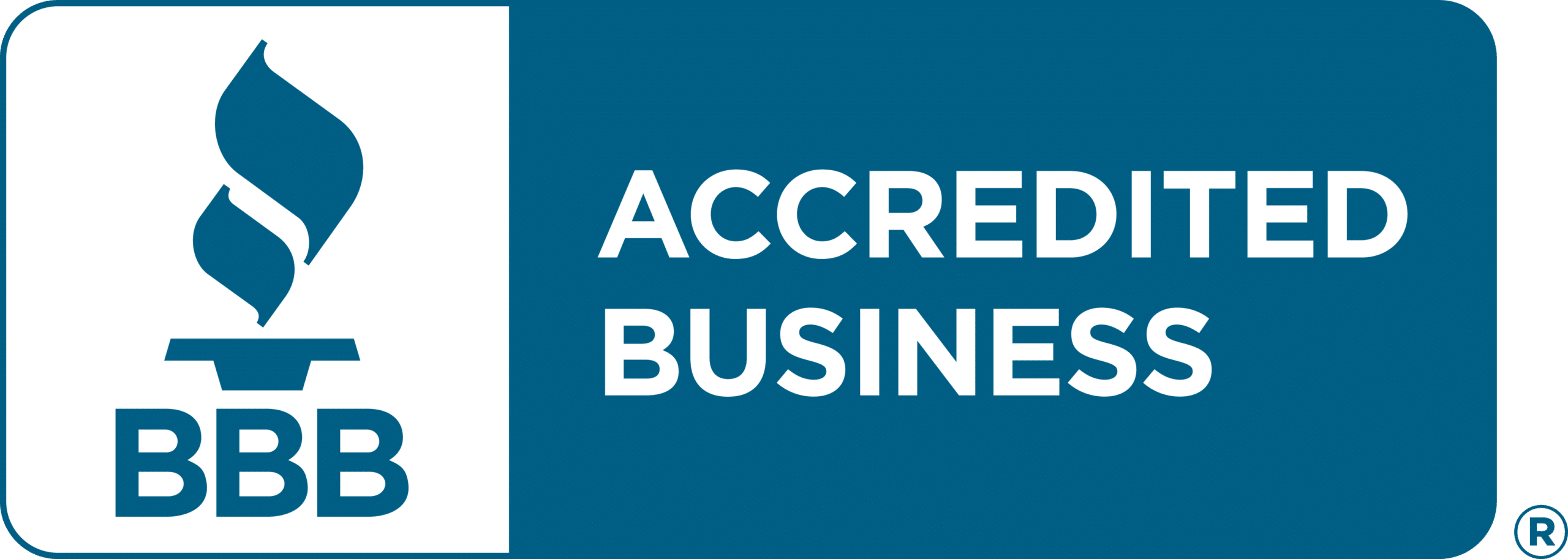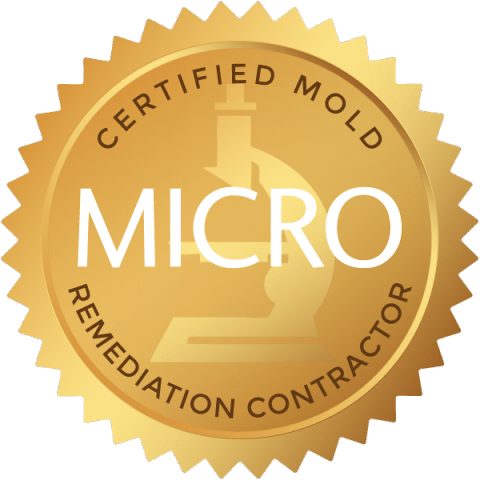Water intrusion can feel overwhelming, especially when you discover unexpected damp spots, mold, or visible damage inside your home or building. These issues often appear quietly and at the worst times—after a heavy storm, a plumbing mishap, or simply from neglect over time.
Many property owners face not just the frustration of cleaning up water but also the stress of dealing with insurance, contractors, and costly repairs. These situations can escalate quickly if not addressed properly, creating long-term headaches and health risks that disrupt daily life.
Understanding where water intrusion starts is key to protecting your property. In this blog, we’ll break down the most common causes of water intrusion, including weather-related vulnerabilities, structural failures, and plumbing emergencies. We’ll also explore proven solutions that offer lasting protection.
Whether you’re looking to prevent issues or you’re already dealing with them, knowing these causes and solutions will help you take control. Plus, we’ll touch on how seamless water damage restoration services can simplify the entire process, making recovery more efficient and less stressful.
Defining What Water Intrusion Is and Why Immediate Action Matters
Water intrusion refers to any unwanted entry of water into a structure where it shouldn’t be present. It isn’t limited to dramatic floods or major leaks. Often, it starts as a slow, unnoticed seepage through walls, roofs, or basements. Over time, this moisture finds its way into materials, fostering mold growth, wood rot, and structural weakening.
Even the smallest points of entry, like a crack in the foundation or a worn-out window seal, can allow water to infiltrate and cause hidden damage.
What makes water intrusion particularly dangerous is its ability to spread undetected. Moisture travels through porous materials, spreads behind walls, under floors, and above ceilings.
This not only compromises the building’s structural integrity but also poses health risks to occupants due to mold and mildew. The longer the moisture remains unchecked, the more costly and complicated the remediation becomes.
Immediate action is critical because time works against you when water is involved. The sooner you identify and stop the source, the fewer materials will need to be replaced, and the lower the risk of secondary damage like mold infestation.
Fast response doesn’t just protect the property; it protects the health and well-being of everyone inside. Identifying water intrusion early allows for targeted repairs, preventing it from becoming an overwhelming—and expensive—problem.
Common Causes of Water Intrusion
Water intrusion doesn’t happen by chance. It is almost always the result of specific failures or conditions inside or outside the property. Knowing what causes these issues helps property owners stay ahead of costly repairs and protect their investment.
Let’s look at some of the most common causes of water intrusion that every property owner should understand:
Severe Weather Conditions Leading to Water Infiltration
Severe weather remains a primary cause of water intrusion in both residential and commercial properties. Heavy rain, strong winds, snow, and hail can overwhelm a building’s defenses, especially if those systems are already weakened by age or poor maintenance.
During storms, wind-driven rain finds its way into siding gaps, under shingles, or through poorly sealed windows. Snow buildup creates ice dams, which trap water on roofs, leading to seepage through tiny cracks.
Over time, even occasional bad weather accelerates wear and tear on roofs, siding, and seals. Materials expand, contract, and degrade, making them more vulnerable each season. Without routine inspections and upkeep, weather-related water infiltration can turn from a minor annoyance to a serious structural issue that requires extensive repairs.
Roof Leaks, Window Failures, and Foundation Damage
Roofs, windows, and foundations form a building’s first layer of defense against water, but they are also among the most common weak points. Roof leaks often start with damaged shingles, clogged gutters, or failed flashing around vents and chimneys. When left unaddressed, even minor roof issues let water seep into the attic, walls, or interior ceilings.
Windows are another frequent culprit. Over time, sealants degrade, frames warp, or glazing fails, allowing water to enter and damage surrounding materials. Foundations, especially in older homes or those built on poorly drained soil, crack and shift under hydrostatic pressure, opening pathways for water to enter basements or crawlspaces.
All these failures demand prompt attention to avoid escalating water damage.
Plumbing Emergencies and Appliance Water Damage
Plumbing failures and malfunctioning appliances introduce water into properties quickly and often without warning. Burst pipes, leaking water heaters, or failing washing machine hoses can flood spaces in minutes, causing significant structural and personal property damage.
Unlike weather-related events, these are indoor issues, often going unnoticed until they create visible damage.
Many plumbing-related incidents rank as common sources of water intrusion, especially in older properties with aging infrastructure. Faulty valves, corroded pipes, and outdated appliances contribute to these emergencies. Staying ahead of potential failures through inspections, timely replacements, and routine maintenance helps prevent these costly events before they happen.
Poor Drainage Systems Causing Basement Flooding
Basement flooding is frequently tied to drainage systems that either don’t exist or fail when needed most. Downspouts that empty too close to the house, clogged gutters, and improperly sloped landscaping all cause water to pool around the foundation. This water builds pressure and seeks out the easiest way inside—through cracks, joints, or unsealed areas.
Basements become prime targets for water intrusion because they sit below grade, surrounded by soil that becomes saturated during heavy rain or snowmelt. When drainage is inadequate, water intrusion becomes a recurring issue, leading to mold, structural decay, and reduced property value.
Faulty Construction Methods Allowing Moisture Entry
Poor construction methods leave properties vulnerable from day one. Builders who cut corners or use substandard materials set the stage for future water intrusion issues. Missing flashing, improperly installed windows, and inadequate waterproofing systems create weak spots where moisture easily enters.
These issues often remain hidden for months or years, only becoming visible when water stains, mold, or rot appear. By the time signs are noticeable, the damage inside the walls or under the flooring can be extensive. Ensuring that construction meets or exceeds best practices and building codes is critical to avoiding these preventable failures.
Best Water Intrusion Solutions That Actually Work
Water intrusion doesn’t have to be inevitable. Effective solutions focus on eliminating vulnerabilities before they cause problems and using proven methods to strengthen the property’s defenses. Whether dealing with an existing issue or focusing on prevention, certain solutions consistently deliver reliable results.
Let’s explore the most effective strategies to prevent water intrusion and protect buildings in the long term:
Professional Building Envelope Repair Techniques
A building’s envelope—the outer shell that separates indoors from outdoors—must be watertight to keep moisture out. When vulnerabilities appear, they need to be addressed by professionals who understand the complexities of building science. This involves more than patching visible cracks. Technicians assess the entire envelope, identify failure points, and implement comprehensive repairs that stop water from entering.
This process might include resealing joints, upgrading flashing, replacing worn siding, and applying advanced waterproof coatings. These methods create durable barriers that handle the demands of weather and time, ensuring long-term protection against moisture intrusion.
Basement Waterproofing Methods That Last
Basements are notoriously difficult to keep dry without the right systems in place. Lasting waterproofing solutions address both external and internal vulnerabilities. Externally, professionals might install drainage boards, waterproof membranes, or exterior French drains to direct water away from the foundation.
Internally, sump pumps, vapor barriers, and sealants provide an additional layer of protection against seepage.
What makes these methods effective is the combination of proactive drainage management and reinforcement of the foundation’s waterproofing. These aren’t quick fixes but long-term solutions designed to prevent flooding, mold growth, and structural weakening of the basement.
Upgrading Drainage Systems For Maximum Protection
Proper drainage protects every part of a building from the roof to the foundation. Upgrading these systems includes improving downspout extensions, installing or repairing French drains, and ensuring the landscape slopes away from the structure.
A comprehensive approach ensures water never has the chance to pool near the building or infiltrate vulnerable areas.
Effective drainage upgrades reduce hydrostatic pressure against foundations, protect basements from flooding, and ensure gutters and downspouts work efficiently even during heavy storms. This proactive step significantly reduces the risk of water intrusion and keeps the property safer year-round.
Advanced Moisture Detection And Remediation Strategies
Identifying water intrusion early prevents minor issues from becoming expensive disasters. Advanced tools like thermal imaging, hygrometers, and moisture meters allow professionals to detect moisture hidden behind walls, under floors, or above ceilings. These tools catch problems that traditional inspections often miss.
Once moisture is detected, remediation needs to be immediate and thorough. Industrial dehumidifiers, air movers, and antimicrobial treatments remove moisture and prevent mold. This approach is especially critical because the effects of water intrusion on buildings extend beyond the visible damage—they compromise structural integrity, degrade materials, and create unsafe environments.
By using advanced strategies, professionals not only fix the problem but also protect the building’s long-term health.
How Absolute Maintenance & Consulting Can Help
Water intrusion issues can feel complicated, but they don’t have to be when you have the right team on your side.
Absolute Maintenance & Consulting brings years of hands-on experience, advanced techniques, and a commitment to quality that ensures your property is protected. Our approach focuses on identifying the root causes of water intrusion, not just treating the symptoms.
We understand how frustrating and expensive these problems can become when not handled correctly.
Our team specializes in both preventative and corrective solutions for water intrusion in residential and commercial properties. Whether it’s a small leak or widespread water damage, we provide services that are detailed, customized, and designed to last.
Here’s how we help protect your property from costly water intrusion:
- Comprehensive inspections to identify vulnerabilities in roofs, basements, and building envelopes.
- Advanced waterproofing services, including exterior drainage system upgrades and basement sealing.
- Fast and precise water damage remediation using cutting-edge drying and moisture detection equipment.
- Long-term maintenance plans to prevent recurring issues and ensure ongoing property protection.
If you’re facing water intrusion challenges or want to safeguard your property before they occur, reach out to Absolute Maintenance & Consulting. Our experts are ready to assess, advise, and act. Call us today to schedule your consultation and take the first step toward a dry, healthy, and secure property.









